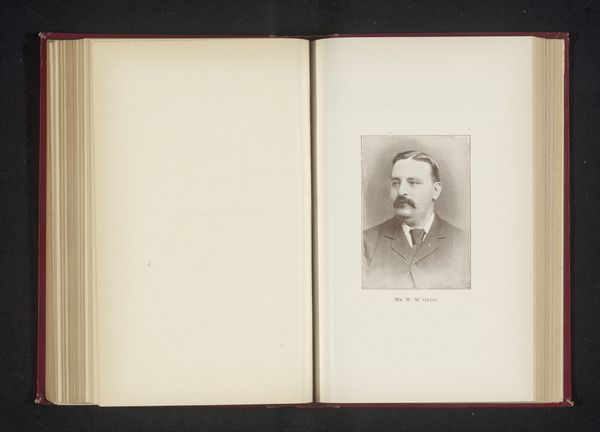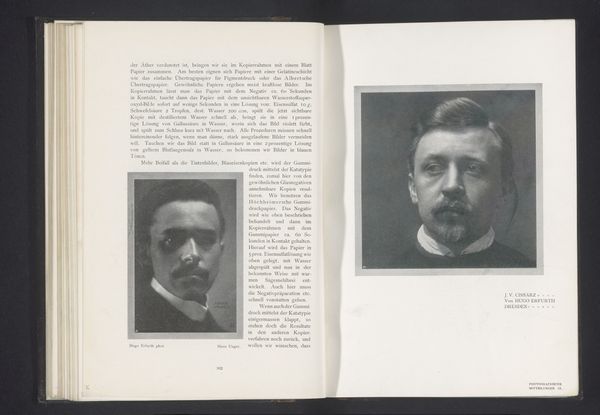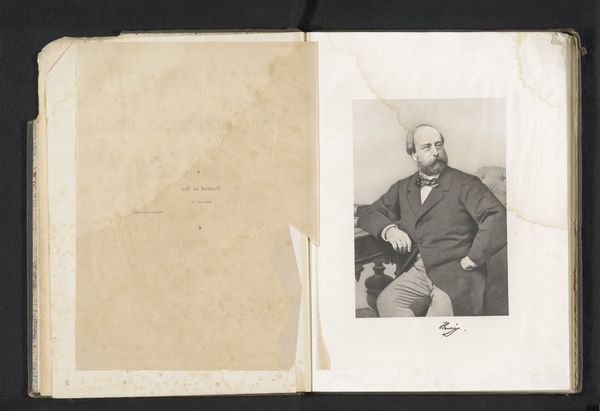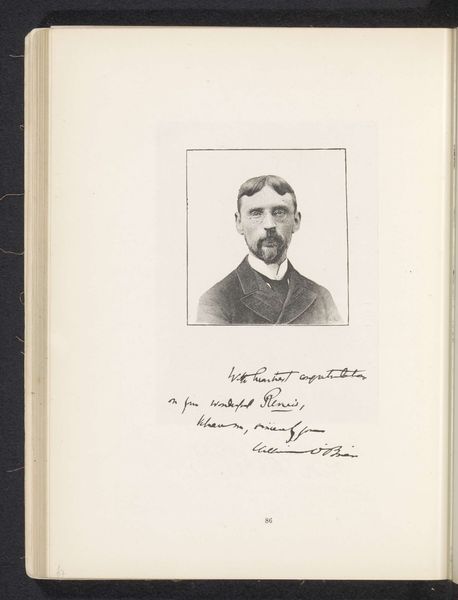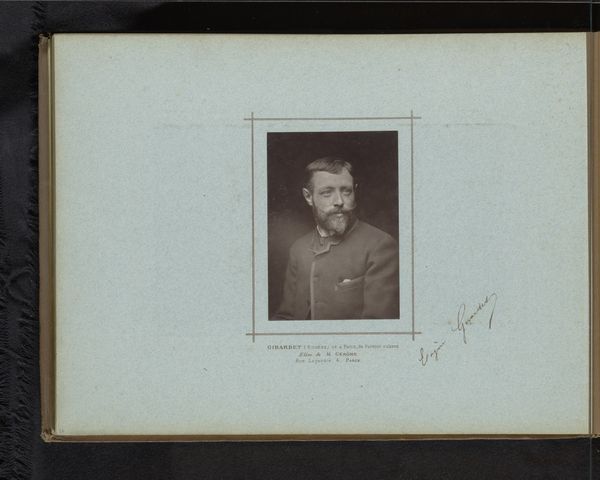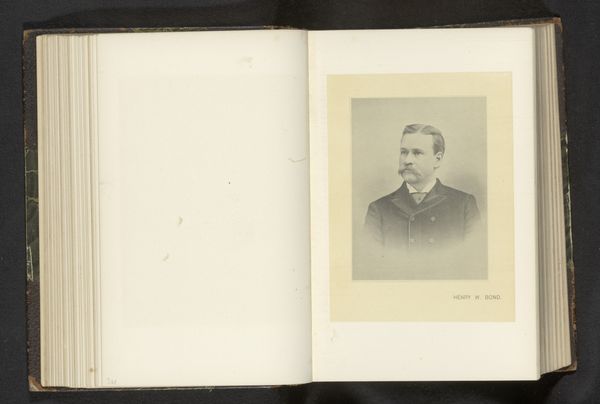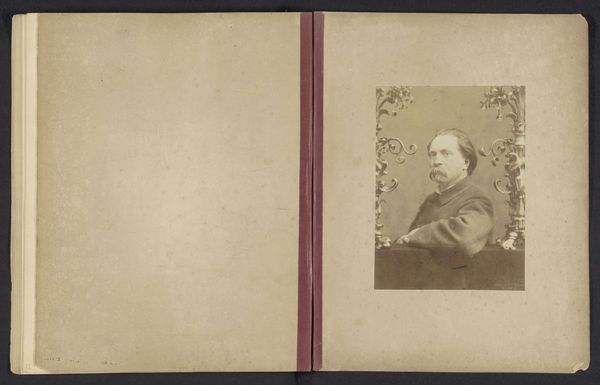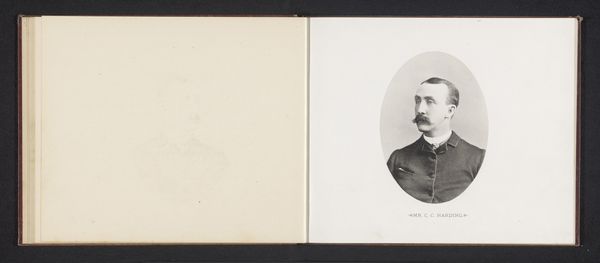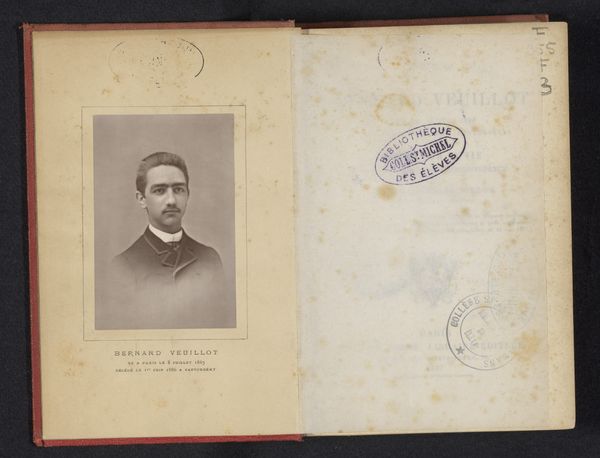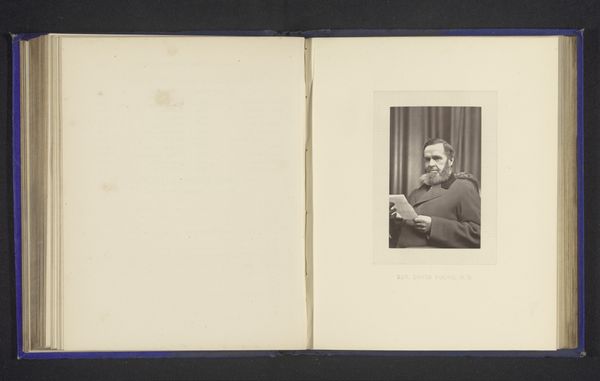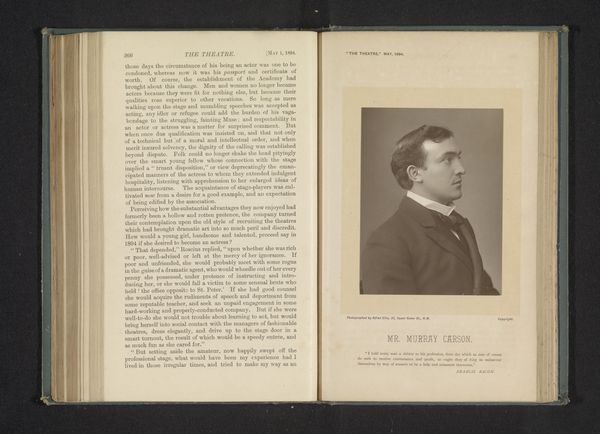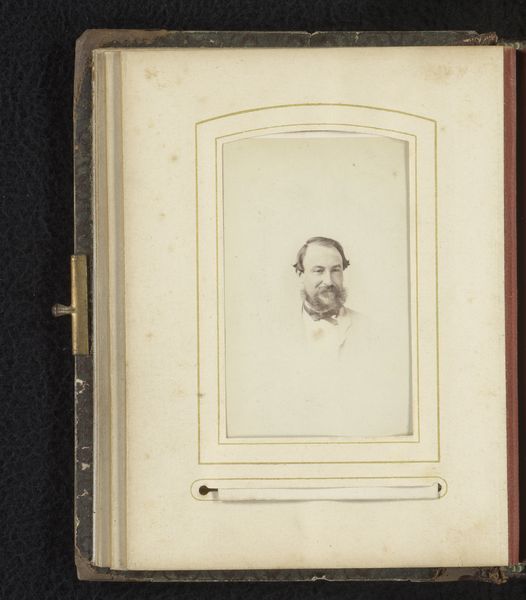
photography
#
portrait
#
photography
#
coloured pencil
#
academic-art
#
realism
Dimensions: height 119 mm, width 89 mm
Copyright: Rijks Museum: Open Domain
Curator: Here we have a photograph from around 1860-1868 by A. de Montméja, titled "Portrait of an Unknown Man Suffering from Acne." It’s part of a larger series documenting skin conditions. Editor: The first thing that strikes me is the man's intense gaze—direct, almost challenging. The starkness of the photograph itself, with its limited tonal range, amplifies the focus on his face and, of course, the acne. Curator: Indeed. The portrait compels us to confront medical conditions that are often stigmatized. In the 19th century, medical photography served the purpose of categorizing and studying disease. This image operates within that historical framework but can also serve as a reflection on beauty standards and representation of disability. How is illness framed, what are the gender, class and social biases behind that, how does the male gaze factor into the representation of diseased skin... Editor: Interesting. From a formal perspective, notice the tight cropping. It eliminates any contextual details, forcing a singular focus on the subject's face. The lighting accentuates the texture of the skin, creating a compelling—albeit unsettling—visual experience. The detail draws the viewer into almost a tangible space, one you can nearly reach out and touch. Curator: It's a delicate balance—observing the photographic qualities while being sensitive to the human subject, and perhaps also challenging conventional, restrictive understandings of beauty. Was this medical observation or documentation intended as exploitation of disfigurement? Who benefits, even today, from images of difference? Editor: The composition, I think, also draws attention to his slightly disheveled hair and the formality of his coat and tie, adding another layer to the interpretation. The texture adds meaning to what some would otherwise ignore. It’s a complex interplay of light, texture, and form. Curator: Right. It underscores how photography—even seemingly objective medical photography—is always enmeshed within larger power dynamics. I think the work prompts viewers to consider the historical and ethical implications of the representation of difference, both in art and medicine. Editor: And for me, it reaffirms the photograph's power to simultaneously document reality and create an evocative aesthetic experience, if only from the light and composition.
Comments
No comments
Be the first to comment and join the conversation on the ultimate creative platform.
